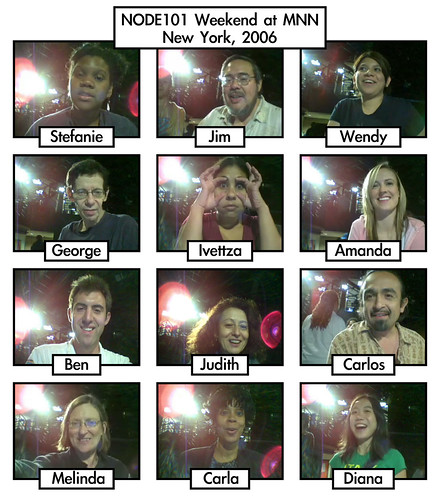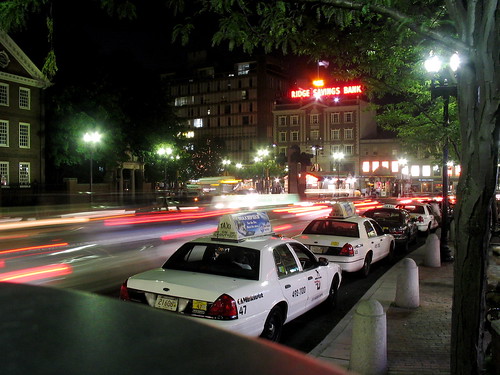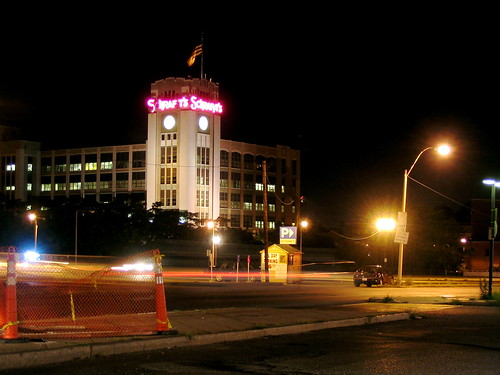Last weekend I took part in a fantastic community exploration walk of Dorchester organized by Boston Cares. About 15 other people and myself met at the Codman Square Health Center with it’s Executive Director Bill Walczak, our guide, and Tiffany, a Boston Cares’ volunteer and the coordinator of the walk; the walks themselves were Tiffany’s original idea, too.
Bill was a fantastic guide with expert knowledge of Dorchester’s history, politics and residents. Originally a farming community, Dorchester was settled one month before Boston in May, 1630. Historically, Dorchester was nearly twice the size it is today; originally defined by creeks long lost and buried, today mostly arbitrarily assigned ZIP codes shape its borders.
Codman Square was once the center of Dorchester, both geographically and commercially. In a time when there were few roads, and crossings were nearly nonexistent, Codman Square was the intersection of a meeting house road, Washington Street, and an Indian trail used by the Massachusett tribe between their winter quarters near what is now Mattapan Square, and their summer lands at the beach near Commercial Point.
Dorchester was annexed by Boston in 1869 in a rigged election. At the time, Southern European and Jewish immigrants were streaming into Boston and the well-to-do wanted nothing doing with them; Dorchester was the perfect place for the rich to move to. Except there was no water. Dorchester has no large natural sources of fresh water, and well-water wouldn’t support an urban population. So, as benefit of the annexation, Dorchester received Boston’s Lake Cochituate water.
The influx of well-to-do led the building of new trolley and subway lines–previous to this transportation was by steam railroad–and large mansions and two-family homes. Of course, it wasn’t long until the immigrants spread out as well. This led to mass construction of Triple-Deckers, a Dorchester architectural invention. These three-story free-standing homes were viewed as an improvement over the brick tenement houses of other northeastern cities and were possible because of the large availability of timber in New England. Many of these homes did not survive the urban flight of the 1950s, but today they are highly desirable both as apartments–often a live-in owner will rent out the other floors to pay the mortgage (as where I live)–and increasingly as condos (though perhaps the end of the current real estate bubble will change this).
Of course, as we moved into talking about the modern period, crime and Dorchester’s bad reputation was addressed. Few people I’ve met in Boston from outside of Dorchester have anything good to say about the community; even fewer have even been there. Regional newspapers and the mass-media, when they do report on Dorchester, concentrate only on crime and murder; when there isn’t any, they report that as out of the ordinary (the Boston Metro recently ran a headline proclaiming, ‘Two weeks without a murder’). Unfortunately, this is entirely mistelling of the true nature of Dorchester
Dorchester, as our walk showed us, contains a lot of beauty and richness in its businesses, its architecture, its art and its people. Washington Street cleaves the Eastern and Western half, the former has higher property-values than the latter, in which many of the Housing Projects sit, but no less beauty. There a few tough parts, but most parts, like Codman Square, Ashmont Hill and Savin Hill are absolutely stunning. Friendly people, beautiful homes and lots of green space met us at nearly every turn.
Dorchester is one-fifth of Boston’s population and contains just as much interest and beauty as the rest; don’t be a stranger.
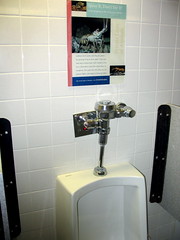
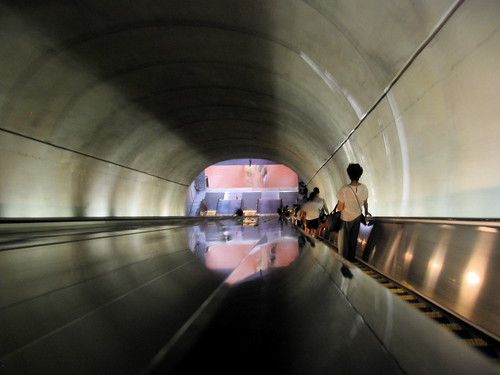
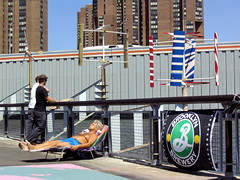
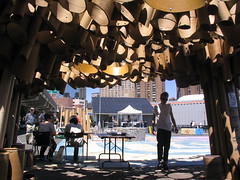

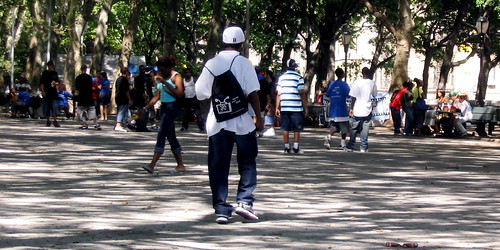 http://www.flickr.com/photos/atomicworkshop/68517300/
http://www.flickr.com/photos/atomicworkshop/68517300/



